We are launching a webinar series to inform the Seaglider user community about the latest available software and piloting tools. Webinars will take place roughly every three weeks and will cover a specific topic through a mix of presentation, demonstration, and Q-and-A. Content will be adapted to meet user needs and feedback. We will kick things off by taking a detailed look at the features of the basestation3 visualization capability and related tools. The first three webinars are scheduled as follows (note that the time of day varies so that those in different time zones have an opportunity to join).
- Wednesday May 15, 8-9am PDT (GMT-7): “Vis 101: Visualization features of basestation3”. An overview of the basestation3 / seaglider.pub visualization features.
- Wednesday June 5, 4-5pm PDT (GMT-7): “Vis 201: How vis can help you pilot”. How to interpret science and engineering plots while piloting.
- Wednesday June 26, 8-9am PDT (GMT-7): “Vis 301: Advanced tools and control”. A look at the more advanced vis features including configuration of users and plots, and regression and ballasting tools.
All webinars will use this zoom link: https://washington.zoom.us/j/9933497917 and will be recorded and made available following the event.
Posted 25 April 2024
The latest version of Seaglider basestation software, Basestation3, has been released under a BSD style open source license. This is the software that we have been testing and demonstrating on our community basestation server, seaglider.pub, for the last several months. Software is available on github.
Posted 9 May 2023
Thanks to all who have responded to our survey about the state of the global Seaglider fleet. If you have not received the survey and would like to stay in touch with us, please drop a note to iopsg@uw.edu and we will add you to our future communications. We are also adding more information about our support activities and the current state of development.
Posted 10 January 2023
With HII’s exit from the Seaglider business, IOP will be expanding our capability to support and propagate Seaglider technology. We are looking for feedback on how we can best support the community. Please see our dear colleague letter for more information. One initial effort will be a January release of basestation v3. Demo and screenshots of the pilot’s index, glider and map tools of the new native visualization and piloting tools now available.
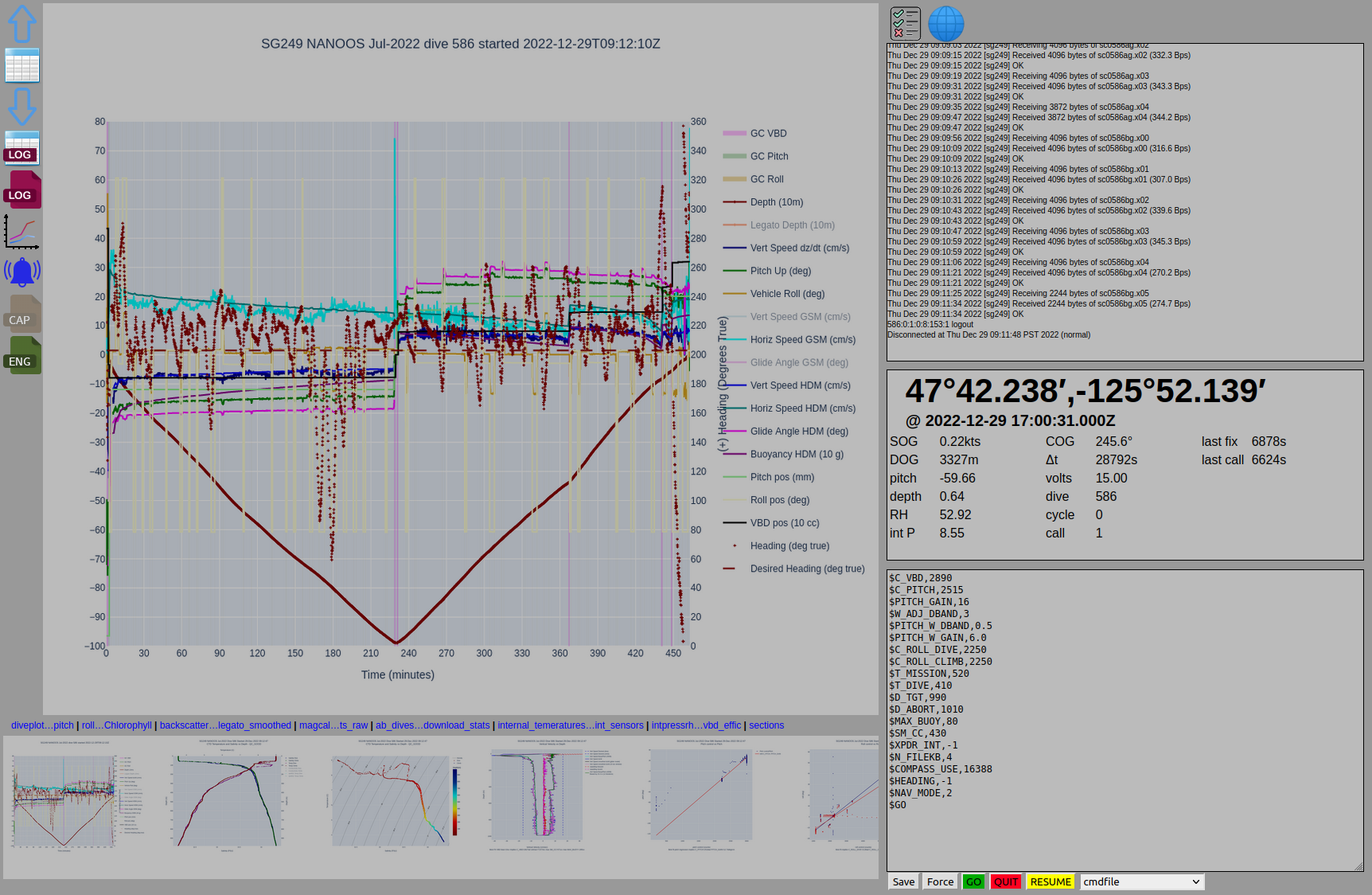
Posted 29 December 2022
Seagliders 180, 219, 220, 237, 247, and 248 have all been recovered, marking the end of S-MODE IOP-1. Looking forward to round two in the spring!
Posted 28 October 2022
The team has returned from a successful cruise aboard RV Armstrong, turning the Davis Strait moored array (16 moorings) and conducting a comprehensive biogeochemical sampling program.
Posted 30 October 2022
2022 marks another busy fall with Healy (AMOS) July-August, Sikuliaq (AMOS) September-October, and Armstrong (Davis Strait) September-October. When all is said and done we should mark 17 mooring recoveries, 21 mooring deployments, 90 CTD stations, and five glider deployments between the two programs.
Posted 16 September 2022
Seagliders 180, 219, 220, 237, 247, and 248 have all been successfully launched off Santa Cruz to get out ahead of S-MODE’s October ship-based observations.
Posted 24 August 2022
After a few missed re-start due to an oil leak, SG249 is deployed offshore Washington to maintain the long running NANOOS glider timeseries.
Posted 12 July 2022
What a way to mark the end of our 2021 field season - we were treated to a spectacular Aurora to end a great cruise on Sikuliaq. This
trip marked Sikuliaq’s deepest excursion into the pack ice – over 200 nautical miles from the ice edge in a year with an unusually rapid and extensive freeze-up.
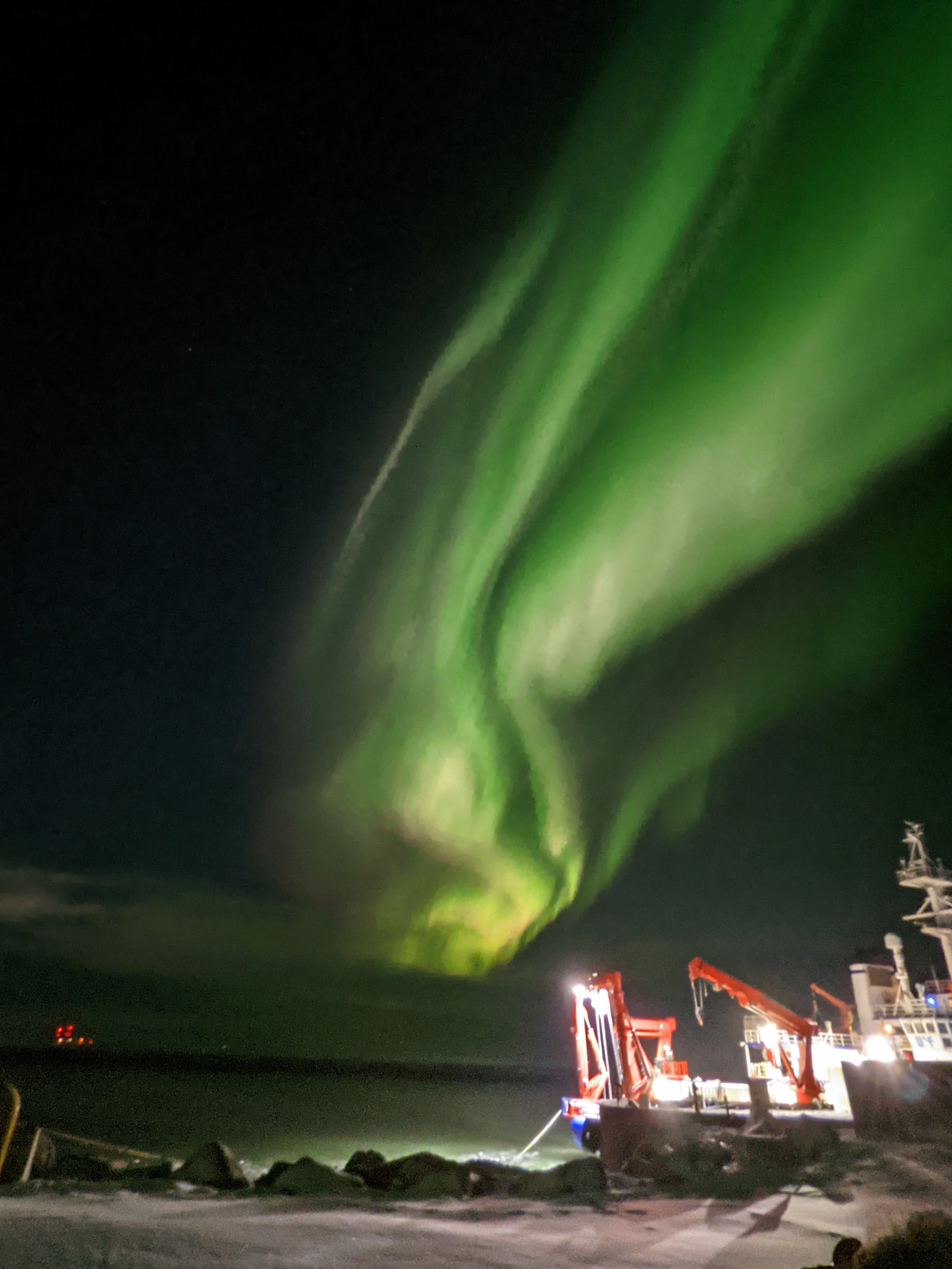
Posted 03 November 2021
Summer and fall 2021 are busy for IOP. Healy is the first of 3 major cruises. We’re almost done out here with 7 of 8 moorings recovered
in tricky conditions through the ice. Now just need to find a spot to drop the gliders.
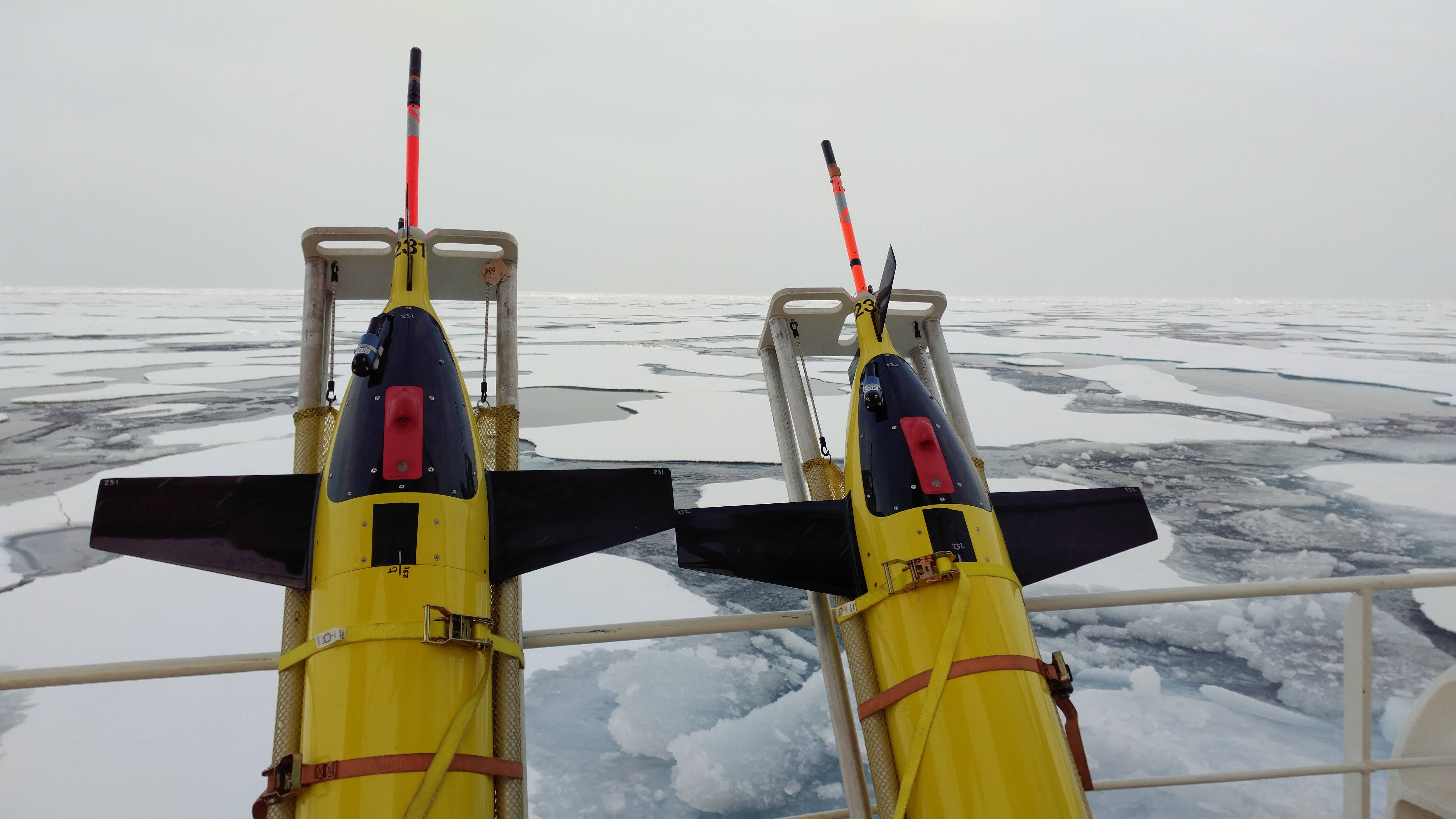
Posted 08 August 2021
SG227 has called in and reported being (mostly) on-station, marking a second consecutive over-winter. Launched in the Beaufort Sea in Septemer 2019, SG227 over-wintered successfully into summer 2020, but could not be recovered due to ship availability. This also marks the longest Seaglider mission to-date. Here’s to hoping we can get a recovery ship this year so we can reward it for a job well done!
Posted 06 June 2021
Thanks to Capt. Thorben Lund and crew from the Landhelgisgæsla vessel Þór for the flexibility to recover SG234 after the glider developed a late mission sensor problem. They were able to execute a superbly efficient recovery just prior to starting the latest deployment of NISKINe surface drifters. It is unfortunate that 234 will miss co-sampling with the drifters, but the glider did collect excellent data for 6 months prior to the fault.
Posted 06 April 2021
SG219 and SG(X)237 are happily in the water following deployments from RRS Discovery as part of the DY130 cruise. The gliders were deployed ahead of the EXPORTS cruise DY131 so they could be part of the hunt for the eddy that cruise will focus its sampling on. Thanks Filipa and all onboard who helped make the deployments a success!

Posted 04 April 2021
With the expert assistance of collaborators from Iceland’s Marine and Freshwater Resources Institute, SG527 was recovered aboard Bjarni Sæmundsson. Thanks to Andreas and all involved for all the help in bringing SG527’s successful five month mission to a successful conclusion!
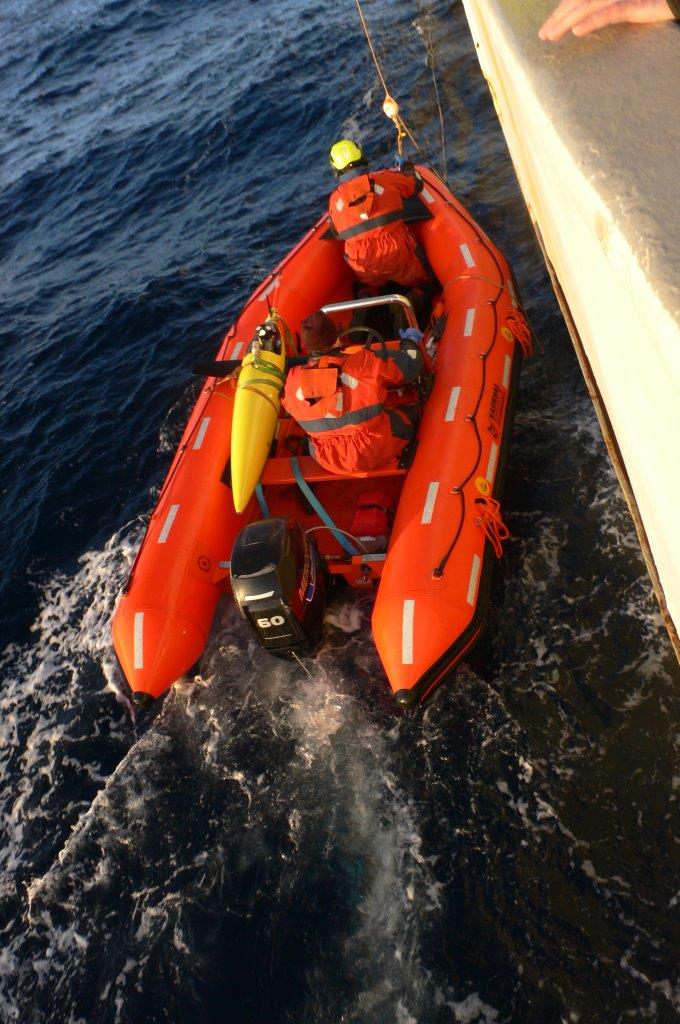
Posted 01 March 2021
Seagliders SGX233 and SGX235 were recovered on Sikuliaq after a month collecting acoustic data from the CAATEX source.
Posted 25 October 2020
Seaglider SG196 was recovered after a successful one-year over winter deployment in the Beaufort Sea! SG227 and SG299 also made it to the summer, but have apparently not made it through the transition period until recovery.
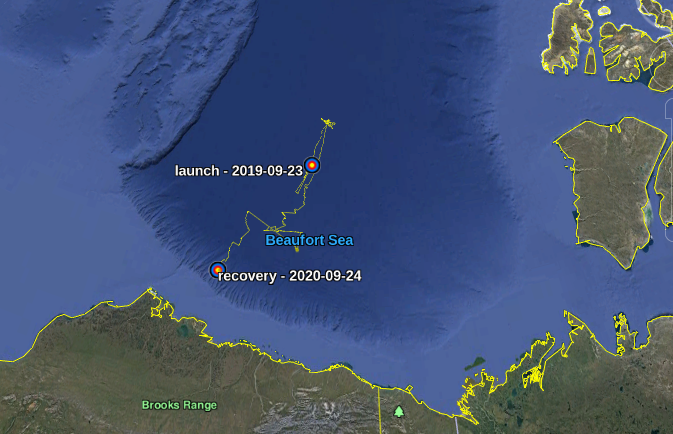
Posted 24 October 2020
After 14 days of quarantine in Denmark and 28 days aboard Danish research vessel Dana, the IOP team has returned after successfully deploying the Davis Strait moored array. IOP previously maintained the array from 2004 - 2017 so this marks a return after a three year gap.
Posted 19 September 2020
SG526 had fun making new friends in the NISKINe 2019 field program! SG526, DG044, Slocum Freya and Triaxus each carried a different flavor of microstructure sensor. NISKINe is a great example of bringing together a wide range of platforms to make amazing observations!
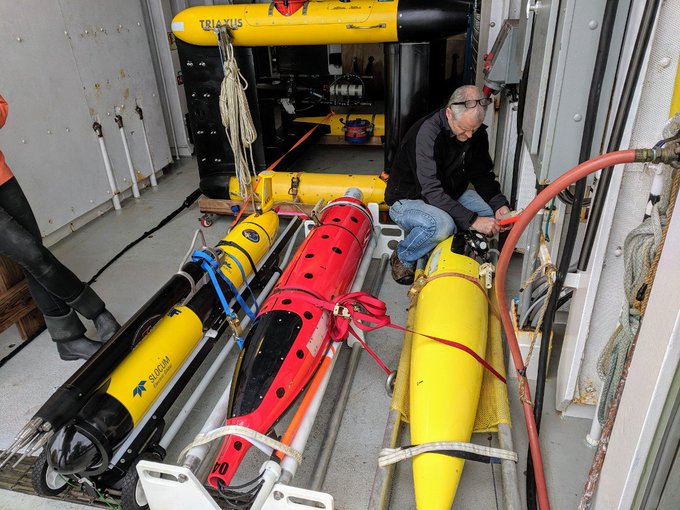
Posted 18 June 2019
After coming out from the ice in November, SG221 and SG223 finished an awesome summer season of sampling with multiple trips under the shelf and along the ice front. With a full annual cycle captured and multiple excursions under the shelf, this is going to be a fantastic data set to analyze.
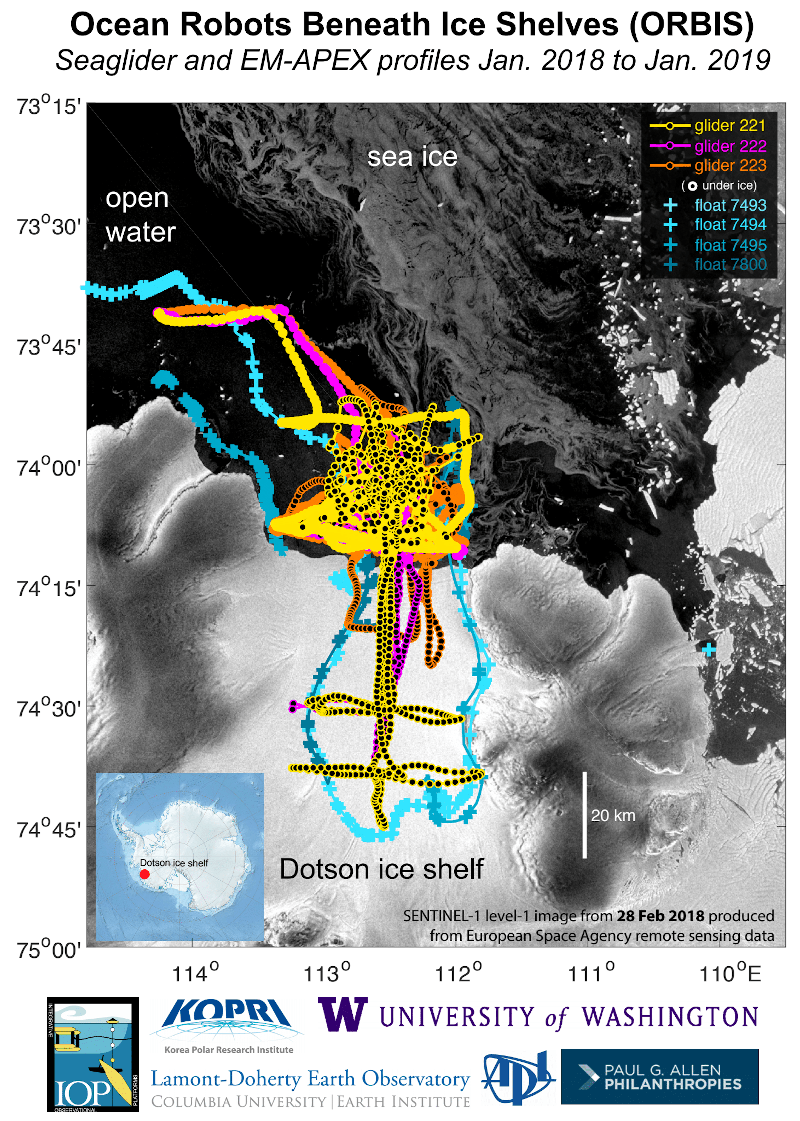
Posted 28 February 2019
ORBIS SG223 has also now found open water and is calling in from her hold point offshore Dotson! SG223 managed brief calls in mid-April and mid-July after ice moved in on March 2. Now we’ll wait for the data backlog to be uploaded and then continue with more under shelf sections.
Posted 20 November 2018
After 8(!) months under ice, ORBIS SG221 has found open water and is calling in from her hold point offshore Dotson! Station keeping over the winter looks great. We’re still waiting for the full winter of data to upload but what we have so far looks good
Posted 5 November 2018
Congratulations to Leah on the successful defense of her PhD thesis!
Posted 28 June 2018